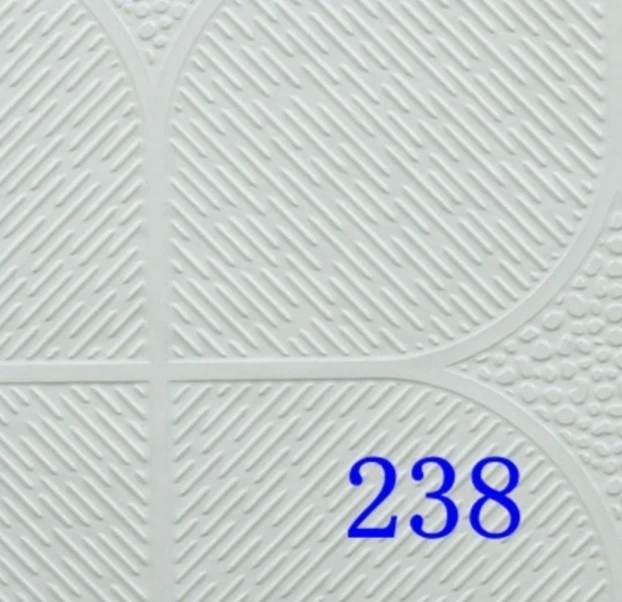Nov . 10, 2024 09:37 Back to list
Exploring the Benefits of Main T Ceiling Grid Systems for Modern Interiors
Understanding Main T Ceiling Grid An Overview
In modern architectural design and construction, the importance of ceilings extends beyond mere aesthetics; they play a crucial role in the overall functionality and ambiance of a space. Among the various ceiling systems in use today, the main T ceiling grid is one of the most prevalent. This article delves into the essential aspects of the main T ceiling grid, exploring its components, installation processes, and advantages.
What is a Main T Ceiling Grid?
A main T ceiling grid, often simply referred to as a T-bar grid, is a framework used to support ceiling tiles or panels. This system is designed to create a suspended ceiling that facilitates the integration of various building systems, such as lighting, HVAC ducts, and acoustic treatments. The grid consists of main runners (the T bars) that run across the ceiling space and cross tees that connect to the main runners at right angles, forming a modular structure.
Components of a Main T Ceiling Grid
The primary components of a main T ceiling grid include
1. Main Runners Long, horizontal bars that extend across the room and form the primary support for the grid system. 2. Cross Tees Shorter bars that intersect the main runners, creating a series of square or rectangular openings designed to hold ceiling tiles.
3. Wall Angles Installed along the perimeter of the room, wall angles provide a transition between the grid and the wall, giving the ceiling a finished look.
4. Hangers These are vertical supports that secure the main runners to the overhead structure, ensuring the ceiling is stable and level.
5. Ceiling Tiles or Panels These fit within the grid openings and can be made from various materials, including mineral fiber, metal, or gypsum, and offer different aesthetic and acoustic properties.
Installation Process
The installation of a main T ceiling grid involves several steps
main t ceiling grid

2. Attach Wall Angles Wall angles are fixed to the walls at the desired height, providing a reference point for the grid.
3. Install Main Runners The main runners are then placed in intervals along the length of the room, secured with hangers that are fastened to the overhead structure.
4. Insert Cross Tees After the main runners are in place, cross tees are added to form the grid, creating a layout to accommodate the ceiling tiles.
5. Fit Ceiling Tiles The final step involves placing the ceiling tiles or panels into the grid openings, ensuring they are correctly aligned and secure.
Advantages of Using a Main T Ceiling Grid
The main T ceiling grid system offers numerous benefits that make it a popular choice for commercial and residential buildings alike
- Versatility The grid system can accommodate various ceiling tiles and is suitable for different applications, including offices, schools, hospitals, and retail spaces.
- Ease of Access One of the key advantages of a suspended ceiling is the easy access it provides to building systems above. This is particularly important for maintenance and repairs of HVAC systems and electrical conduits.
- Acoustic Control Many ceiling tiles available for use in a T-bar grid are designed to improve sound absorption, making them ideal for environments where noise reduction is essential.
- Aesthetic Appeal The ability to choose different finishes and textures for ceiling tiles allows for creativity in design, enhancing the overall look of a space.
- Energy Efficiency Depending on the materials used, a suspended ceiling can contribute to improved energy efficiency, as it can help manage lighting and temperature in a room.
Conclusion
The main T ceiling grid is integral to contemporary ceiling design, providing functional, aesthetic, and acoustic benefits. Understanding its components and installation process can help in making informed decisions for any construction or renovation project. Whether in a bustling office or a serene residential setting, a well-installed T ceiling grid enhances both the usability and appearance of a space, making it a worthy consideration for any building plan.
-
Durable Ceiling T Grid Systems | Easy InstallationNewsAug.29,2025
-
PVC Gypsum Ceiling: Durable, Laminated Tiles for Modern SpacesNewsAug.28,2025
-
Pvc Gypsum Ceiling Is DurableNewsAug.21,2025
-
Mineral Fiber Board Is DurableNewsAug.21,2025
-
Ceiling Tile Clip Reusable DesignNewsAug.21,2025
-
Ceiling T Grid Modular DesignNewsAug.21,2025







